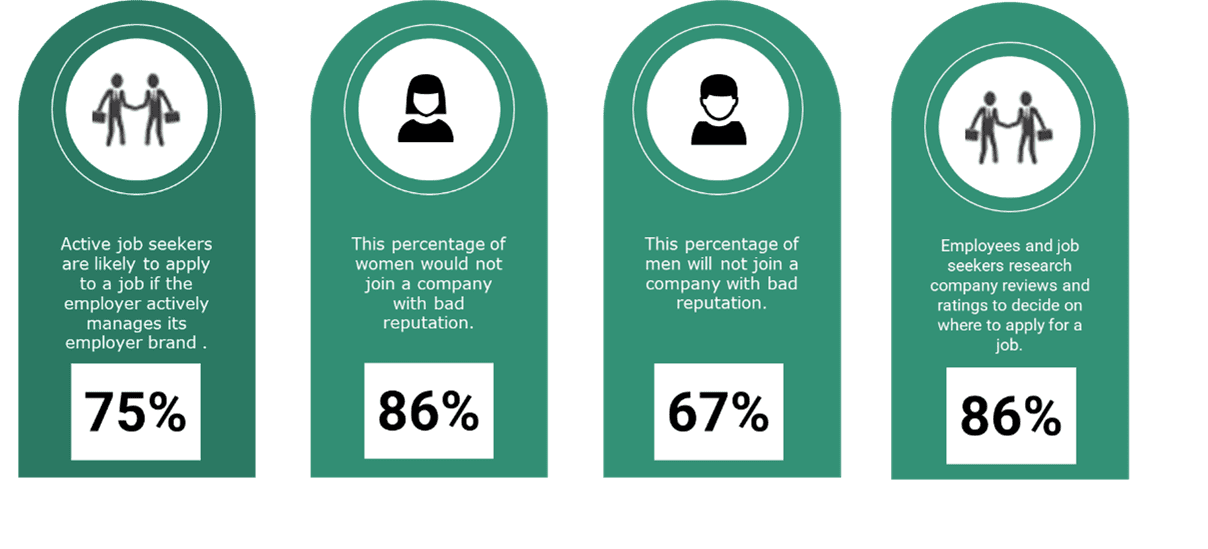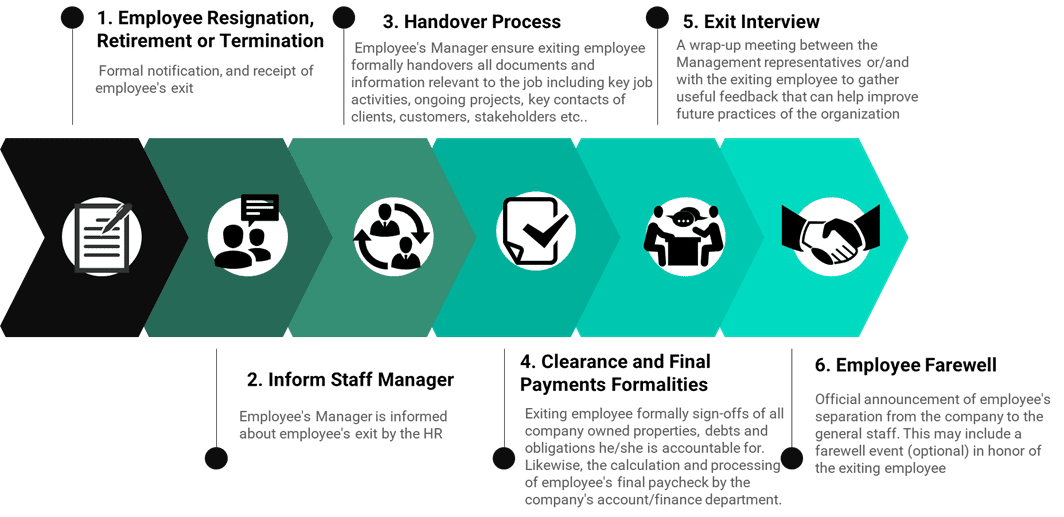Employees leave their employers for many reasons, ranging from the desire to join organisation with better culture, compensation or career growth opportunities. Regardless of the reasons, the impression the employer leaves with the exiting employee matters a lot. Employees are the most influential advocates of an employer’s brand while in or out of the organisation.
Employee offboarding is a structured process and procedure that an employee goes through before formal separation from an organisation. The process is otherwise known as, Exit Management. A key objective of deploying an effective offboarding or exit management program is to position an organisation’s brand towards attracting potential talents, customers, good reputation etc. while making a good ‘lasting impression’ on their exiting employees.
Even though business leaders and HR making efforts to guarantee employees stay engaged and enjoy their experience during their contract with an organisation, it is inevitable that someday, employees will transition from the organisation. Either voluntarily or involuntarily, the reality of employee exit is imminent. Organizations have realised that it makes better sense from a business perspective to build a community of “brand advocates”, particularly in this era of talent wars across industries locally and globally. It is essential to deploy an effective offboarding programme to foster a positive impression of the organisation on exiting employees. Reviews made about their personal experience to friends, members of communities of practice, and other acquaintances may influence opinions of future talents, prospective customers, or business partners.
On the other hand, potential employees constantly seek information about corporations, businesses, or organisations they intend to work for from either current or former employees of the organisation. In addition, the internet has made such information more accessible through social media and company review websites such as Glassdoor, Indeed, Nairametrics, and so on. These review sites make it easy for the exited employees to narrate their candid views and insights about their work environment, culture, people, management styles, and other underlying factors contributing to the organisations’ challenges.
Statistics from Glassdoor indicate that job seekers visit employers’ social media platforms to evaluate the employer’s brand.
Source: Glassdoor data, pcl.
Negative reviews posted on the internet may go viral and cause a dent in an organisation’s reputation; therefore, sustaining a community of people who consistently regard the organisation’s positive reputation as an effective way to protect the employer brand.
The effectiveness of an organisation’s offboarding programme is impacted by its culture, budget and retention strategy. Therefore, organisations need to have an offboarding structure that supports employees’ talent needs and reflects the business’s overall culture.
A standard offboarding structure and process should capture these key activities to ensure organisations are able to create a valuable and practical employee exit experience:
“People judge an experience largely by how they felt at its peak—its most intense point—and at its end, rather than thinking about the sum total of the experience.” – Daniel Kahneman (Behavioural scientist and Nobel laureate)
How organizations treat exiting employees during their offboarding period may leave a lasting impression about the culture and practice of the organisation. It is best to recognise and appreciate the service of employees and make them feel valued and respected, this will earn the organisation a community of brand advocates. Some important ways these can be achieved include;
- Generate good faith with the departing employee: An organisation’s positive or negative reviews by the people inside and outside impact its reputation. This may further impact the company’s access to a network of referrals for potential customers or future.Make efforts to ensure that employees experience a positive and impressive transition. It can inform positive reviews even if they had not had the best experience with the organisation.
- Give opportunities to returning employees: Historically, some organisations were not open to returning employees because they were deemed un-loyal. Technically, returning employees are perceived to be more engaging and motivated to contribute their added knowledge, skills and experience to the success and growth of the receiving organisation.
- Be open to positive change: To avoid getting stuck in a cycle of turn over, ensure productive actions are taken on the feedbacks given during the exit interviews. The neglection of this may negatively impact the retention of employees within the organisation.
- Stay connected: Ensure to keep in touch with your exited employees through a range of network opportunities, newsletters, alumni microsite, or LinkedIn. You want to make sure that former employees have a way to keep in touch with your organisation so you can keep them informed about business and career opportunities.
- Alumni network: Online platforms can be established and delegated to alumni to take lead in managing the network. The platform can also be used to celebrate their relevance as former employees of the organisation as well as, their achievements in their new employments.
- Discount benefits: Offering benefits including discounted company services, goods or products is a forward-thinking retention strategy for exited employees.
- Post-employment support: Assist exiting employees with the necessary resources that may be required in helping them secure prospective jobs such as, providing their future employers with positive feedback and ensuring such is being integrated.
- Training and career support programme: In case of layoffs, organizations can offer outplacement programmes to assist the employees’ transition into newer or better career opportunities. A recent outplacement programme was conducted by pcl. for a reputable and international software development company with a presence in Nigeria. The programme was aimed at providing the psychological support the management of the emotions associated with their newly displaced employees through counselling, financial advisory/investment opportunities, and career opportunities.
An effective onboarding practice will positively impact the employer brand through the insights provided by employees on the current organisational issues that may affect their experience. This will support the organisation’s effort to keep existing (and future) employees engaged, productive, and committed, benefiting the employer brand and image.
Finally, organisations will be motivated to take urgent actions to build and maintain a better brand reputation, competitive edge, and market advantage when businesses have access to competitors’ information on what they offer to attract their talents.
Written by:

Adolrah Boyejo
Analyst


